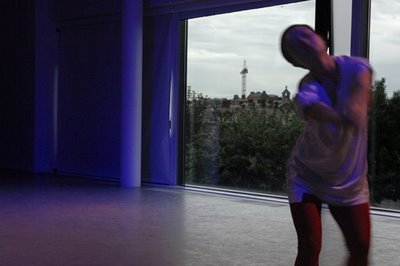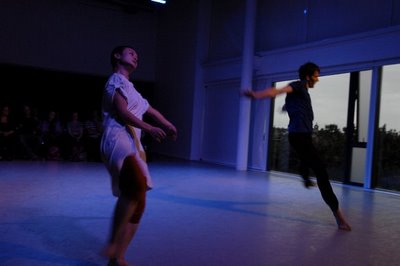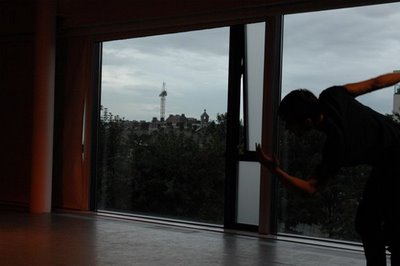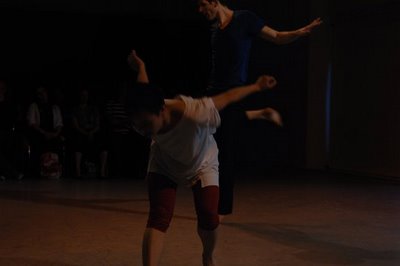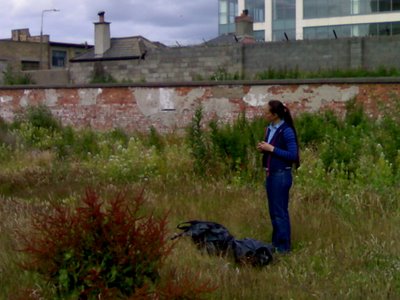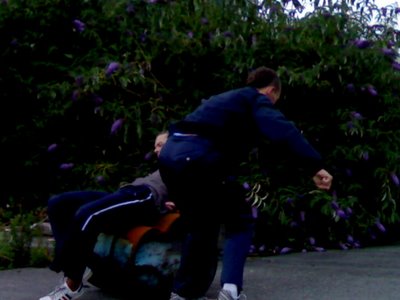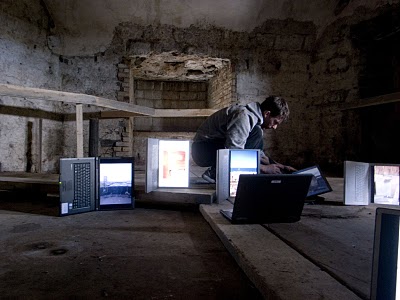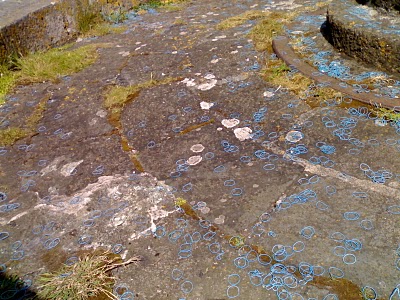Thanks to Michael Seaver who wrote an article in today’s Irish Times about my work on bodies and buildings.
Choreographer Fearghus Ó Conchúir is using the changing face of Dublin as the backdrop to his innovative dance performances, writes Michael Seaver
LOADED WITH political resonance, Tiananmen Square was a popular and high-profile choice for western participants at last year’s Dadao Live Art festival in Beijing. Irish choreographer Fearghus Ó Conchúir instead chose to perform at the building site of the Olympic Stadium, for him an equally, if not more resonant political setting for his dance.
“Some of the other artists were really surprised that I had got permission to perform there,” says Ó Conchúir. He didn’t. “I did it on the sly. For me, it felt more appropriate. It was about asserting the right of an individual to express himself, perhaps on behalf others, in the shadow of this national governmental symbol.”
The western world seems infatuated by China’s new cityscapes. In this month’s Vanity Fair magazine, Kurt Anderson pays a gushing tribute to Beijing’s new architecture. It’s a typical full-colour glossy reflection of the new architecture (rather predictably titled From Mao to Wow!), with impressive photographs and a convenient narrative. Anderson finds parallels with New York City’s heyday in the early 20th century when the Empire State Building, Chrysler Building, Grand Central Station and Rockefeller Center marked the city’s cultural significance, which still exists today.
But there is an inconvenient narrative behind Beijing’s new architecture that Ó Conchúir wanted to articulate. “A lot of people had to leave their homes and make way for the new construction. In this context, I felt it was important to make a statement for the individual.” The individual is constantly forgotten in Beijing preparations and even human horse-power is cheap. In the past month, 10,000 soldiers and civilians have cleared algae from the coastal city of Qingdao, which will host the yacht races at the Olympics.
Ó Conchúir agrees with Anderson’s assessment that Beijing’s cultural significance is being defined at present through its architecture. It is also something he sees back in Dublin, where areas of the city are making way for new buildings and a new cityscape is being created that will define Dublin for years to come. As dance-artist-in-residence with Dublin City Council, he has interacted with this changing architecture in rather the same way as he did in Beijing: rather than put dancers in sites of historical interest, he has placed them in building sites and wastelands that precede the bulldozers and cranes.
“The whole rush to create new buildings is, of course, tied to our financial wealth,” he says. “But the change of the physical landscape is also a change of our mental landscape, our history and how we imagine we are at this moment.” Responding to these changes as a dance artist means going into these spaces and finding new ways of moving there, in other words, relating the human scale back to the new building.
“I’m not a luddite,” he is clear to point out. “I’m not against the development. I just want to connect with what was there before, as a way of understanding and humanising the new when it comes along.” New architecture is almost always constructed on top of previous settlements or buildings. “Even the process of building foundations is like opening a grave,” he says. “We have to do something with the memories of the old buildings and find ways to make these new buildings more adapted to exuberant human interaction, even though many are more security conscious and corporatised.”
This doesn’t mean redesigning the buildings, but finding ways to adapt the spaces. There is a wall near where he has been filming off Sheriff Street, which always has people sitting on it, talking. It was built as a barrier, but it is now used as a space for socialising. It is only by the interaction of the human body with the built environment that social spaces are created in unexpected spaces. He sees a similar thing happening because of the smoking ban. Banished outdoors, smokers in the Dockland’s new offices have had to seek out or create social spaces that weren’t in the architect’s plans.
“His work is very significant and relevant to the way the city is developing,” says Jack Gilligan, arts officer for Dublin City Council. “It is great to have someone responding so fluidly to his surroundings. Even since he began working in this area of the north inner city, things have changed.”
Ó CONCHÚIR’S CV IS full of contradictions. A native Irish speaker, he completed degrees in English and European Literature at Magdalen College in Oxford. He then studied dance at London Contemporary Dance School and, now as a choreographer, the self-proclaimed country boy from An Rinn in Waterford is finding artistic resonance in building sites off inner city Dublin’s Sheriff Street.
His first work to connect the performer with his environment was Match, a dance film for the 2006 International Dance Festival Ireland. This duet focussed on the contests in daily life and relationships and featured two tussling male dancers performing in an empty Croke Park.
The towering terraces amplified their battle with resonances that went further than GAA contests, but appeared almost gladiatorial. After that he teamed up with architect Dan Dubowitz and was commissioned by Fingal County Council for a public art project set in the area’s Martello Towers. The public aspect of this is important.
“I am keen to make the work accessible to people,” he says. “When I say accessible, it’s not about changing the content of the work. The work is as strange and idiosyncratic and personal as always. But rather than hide it in a studio, or a theatre where it is marginally a self-selected audience, I want to show it where people can see it. They are not obliged to stay and watch it. But they will see it.”
While in China he teamed up with choreographer Xiao Ke and composer Yin Yi and together they have created Dialogue, which will be performed at Dancehouse on July 30th. As the title suggests, the work is about talking together, but it is not a work about Ireland and China.
“Neither of us wanted that, however, when we come together we embody certain aspects of the places we come from. So we’re going to see how that fits together, but without making a programmatic declaration about inter- cultural relations.”
Another dance, Niche, is directly inspired by the derelict areas awaiting the bulldozers in the Docklands. Ó Conchúir teamed up with James Kelly of Feenish Films and made a dance film in the original location, a setting that is ideal. “My work isn’t polished and glamorous. It’s quite rough and muscular, and it’s that grittiness that gets amplified when its put into an environment that isn’t so pristine.” Later in the year, Niche will transfer to the Project Arts Centre, thanks to a fundraising campaign that, it is hoped, will raise 500 individual donations of €100.
“Niche is about finding a place for ourselves, a niche, in an environment that’s changing all the time. It’s about living in cities with cranes on the skyline, about communities that aren’t like we remember. It’s about excitement and loss and it’s something I think we can all connect to.”
Dialogue will be performed on Wed and Thurs at 8pm at Dancehouse, Corner, Foley St, Dublin, 01- 8558800.
www.bodiesandbuildings.blogspot.com
© 2008 The Irish Times
This article appears in the print edition of the Irish Times

